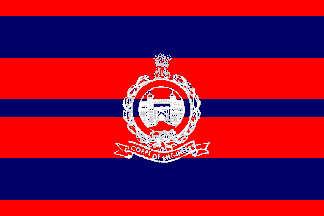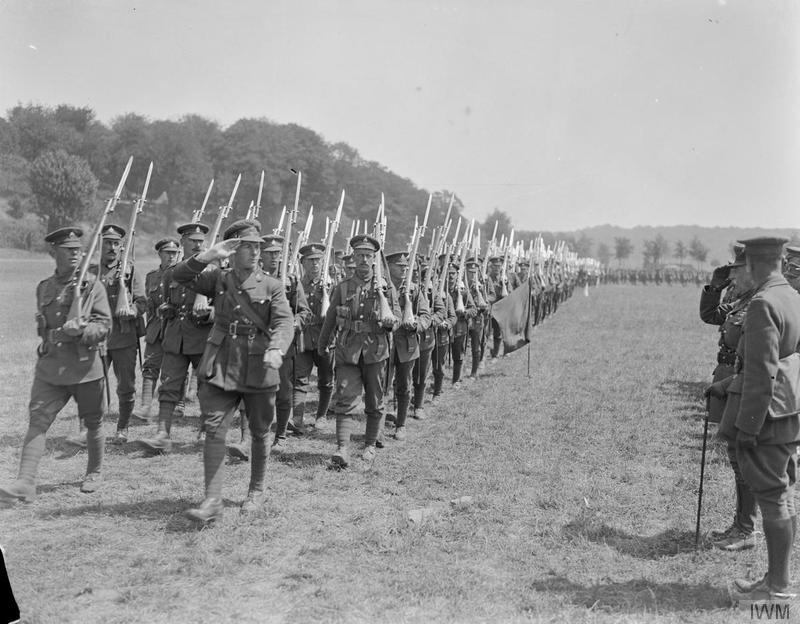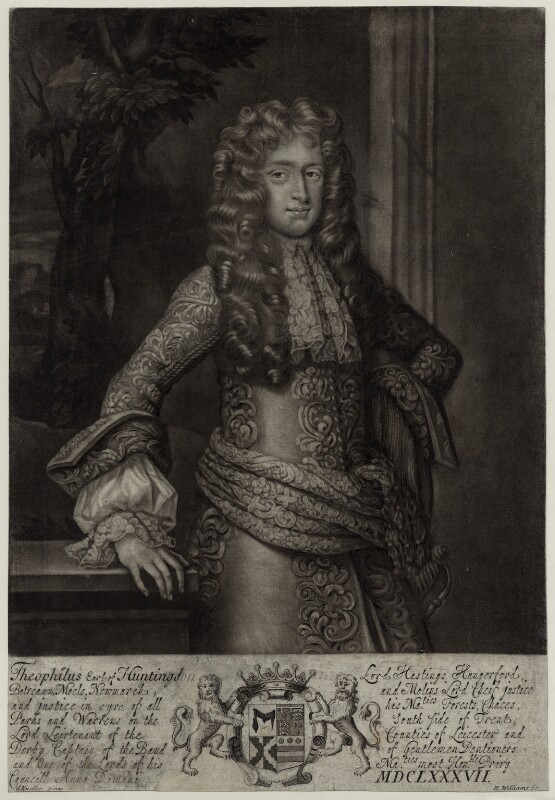|
72nd Indian Infantry Brigade
The 72nd Indian Infantry Brigade was an infantry brigade, of both the British and Indian Armies, formed in the United Kingdom in January 1941 during the Second World War. On 1 June 1943 it was re-designated as the British 72nd Infantry Brigade. On 28 April 1943 a new 72nd Infantry Brigade was formed in India by the re-designation of the 72nd Indian Infantry Brigade, which had been formed a few weeks earlier in March 1943 as an infantry formation of the Indian Army during World War II. It was assigned to the 36th Indian Infantry Division, which became a British division on 1 September 1944. Composition in United Kingdom 1941-1943 * 13th Battalion, Royal Welch Fusiliers (''21 January 1941 - 24 September 1942'') * 6th Battalion, Royal Inniskilling Fusiliers (''21 January 1941 - 14 January 1942'') * 15th Battalion, South Staffordshire Regiment (''21 January 1941 - 25 May 1942'') * 4th Battalion, East Lancashire Regiment (''14 January 1942 - 8 October 1942'') * 11th Battalion, Devon ... [...More Info...] [...Related Items...] OR: [Wikipedia] [Google] [Baidu] |
British Raj
The British Raj (; from Hindi ''rāj'': kingdom, realm, state, or empire) was the rule of the British Crown on the Indian subcontinent; * * it is also called Crown rule in India, * * * * or Direct rule in India, * Quote: "Mill, who was himself employed by the British East India company from the age of seventeen until the British government assumed direct rule over India in 1858." * * and lasted from 1858 to 1947. * * The region under British control was commonly called India in contemporaneous usage and included areas directly administered by the United Kingdom, which were collectively called British India, and areas ruled by indigenous rulers, but under British paramountcy, called the princely states. The region was sometimes called the Indian Empire, though not officially. As ''India'', it was a founding member of the League of Nations, a participating nation in the Summer Olympics in 1900, 1920, 1928, 1932, and 1936, and a founding member of the United Nations in San F ... [...More Info...] [...Related Items...] OR: [Wikipedia] [Google] [Baidu] |
Royal Welch Fusiliers
The Royal Welch Fusiliers ( cy, Ffiwsilwyr Brenhinol Cymreig) was a line infantry regiment of the British Army, and part of the Prince of Wales' Division, that was founded in 1689; shortly after the Glorious Revolution. In 1702, it was designated a fusilier regiment and became the Welch Regiment of Fusiliers; the prefix "Royal" was added in 1713, then confirmed in 1714 when George I named it the Prince of Wales's Own Royal Regiment of Welsh Fusiliers. In 1751, after reforms that standardised the naming and numbering of regiments, it became the 23rd Regiment of Foot (Royal Welsh Fuzileers). In 1881, the final title of the regiment was adopted. It retained the archaic spelling of ''Welch'', instead of ''Welsh'', and ''Fuzileers'' for ''Fusiliers''; these were engraved on swords carried by regimental officers during the Napoleonic Wars. After the 1881 Childers Reforms, normal spelling was used officially, but "Welch" continued to be used informally until restored in 1920 by Army Ord ... [...More Info...] [...Related Items...] OR: [Wikipedia] [Google] [Baidu] |
List Of Indian Army Brigades In World War II
The Indian Army during World War II fought on three continents Europe, Africa and Asia. They also had to supply formations for home service. This list details the Cavalry, Armoured and Infantry brigades formed by the Indian Army during World War II. Cavalry brigades * 1st (Risalpur) Cavalry Brigade * 3rd (Meerut) Cavalry Brigade * 4th (Secunderabad) Cavalry Brigade Armoured brigades * 50th Indian Tank Brigade * 251st Indian Tank Brigade previously called 1st Indian Armoured and 251st Indian Armoured Brigade *252nd Indian Armoured Brigade previously called 2nd Indian Armoured Brigade *254th Indian Tank Brigade previously called 4th Indian Armoured and 254th Indian Armoured Brigade *255th Indian Tank Brigade previously called 5th Indian Armoured and 255th Indian Armoured Brigade * 267th Indian Armoured Brigade * 268th Indian Armoured Brigade converted to 268th Indian Infantry Brigade October 1942 Motor brigades * 1st Indian Motor Brigade designated, but actually formed as 1st I ... [...More Info...] [...Related Items...] OR: [Wikipedia] [Google] [Baidu] |
Indian Engineers
The Indian Army Corps of Engineers is a combat support arm which provides combat engineering support, develops infrastructure for armed forces and other defence organisations and maintains connectivity along the borders, besides helping the civil authorities during natural disasters. College of Military Engineering, Pune (CME) is the premier technical and tactical training institution of the Indian Army Corps of Engineers. The Corps consists of three groups of combat engineers, namely the Madras Sappers, the Bengal Sappers and the Bombay Sappers. It has a long history dating back to the mid-18th century. The earliest existing subunit of the Corps (18 Field Company) dates back to 1777 while the Corps officially recognises its birth as 1780 when the senior-most group of the Corps, the Madras Sappers were raised. A group is roughly analogous to a brigade of the Indian infantry, each group consisting of a number of engineer regiments. The engineer regiment is the basic combat enginee ... [...More Info...] [...Related Items...] OR: [Wikipedia] [Google] [Baidu] |
Gloucestershire Regiment
The Gloucestershire Regiment, commonly referred to as the Glosters, was a line infantry regiment of the British Army from 1881 until 1994. It traced its origins to Colonel Gibson's Regiment of Foot, which was raised in 1694 and later became the 28th (North Gloucestershire) Regiment of Foot. The regiment was formed by the merger of the 28th Regiment with the 61st (South Gloucestershire) Regiment of Foot. It inherited the unique distinction in the British Army of wearing a badge on the back of its headdress as well as the front, a tradition that originated with the 28th Regiment after it fought in two ranks back to back at the Battle of Alexandria in 1801. At its formation the regiment comprised two regular, two militia and two volunteer battalions, and saw its first action during the Second Boer War. Before the First World War, the regiment's four auxiliary battalions were converted to three Territorial Force battalions and a Special Reserve battalion, and a further 18 battalio ... [...More Info...] [...Related Items...] OR: [Wikipedia] [Google] [Baidu] |
Royal Sussex Regiment
The Royal Sussex Regiment was a line infantry regiment of the British Army that was in existence from 1881 to 1966. The regiment was formed in 1881 as part of the Childers Reforms by the amalgamation of the 35th (Royal Sussex) Regiment of Foot and the 107th Regiment of Foot (Bengal Light Infantry). The regiment saw service in the Second Boer War, and both World War I and World War II. On 31 December 1966, the Royal Sussex Regiment was amalgamated with the other regiments of the Home Counties Brigade – the Queen's Royal Surrey Regiment, the Queen's Own Buffs, The Royal Kent Regiment, and the Middlesex Regiment (Duke of Cambridge's Own) – to form the Queen's Regiment; which was later, on 9 September 1992, amalgamated with the Royal Hampshire Regiment to form the present Princess of Wales's Royal Regiment (Queen's and Royal Hampshires). History 1881–1914 The regiment was formed in 1881 as part of the Childers Reforms by the amalgamation of the 35th (Royal Sussex) Regi ... [...More Info...] [...Related Items...] OR: [Wikipedia] [Google] [Baidu] |
South Wales Borderers
The South Wales Borderers was a line infantry regiment of the British Army in existence for 280 years. It came into existence in England in 1689, as Sir Edward Dering's Regiment of Foot, and afterwards had a variety of names and headquarters. In 1782, it became the 24th Regiment of Foot, and had its depot in Warwickshire. Based at Brecon from 1873, the regiment recruited from the border counties of Brecknockshire, Monmouthshire, and Herefordshire. It was not called the South Wales Borderers until the Childers Reforms of 1881. The regiment served in a great many conflicts, including the American War of Independence, various conflicts in India, the Zulu War, Second Boer War, and World War I and World War II. In 1969 the regiment was amalgamated with the Welch Regiment to form the Royal Regiment of Wales. History Early history The regiment was formed by Sir Edward Dering, 3rd Baronet as Sir Edward Dering's Regiment of Foot in 1689, becoming known, like other regiments, by the ... [...More Info...] [...Related Items...] OR: [Wikipedia] [Google] [Baidu] |
Somerset Light Infantry
The Somerset Light Infantry (Prince Albert's) was a light infantry regiment of the British Army, which served under various titles from 1685 to 1959. In 1959, the regiment was amalgamated with the Duke of Cornwall's Light Infantry to form the Somerset and Cornwall Light Infantry which was again amalgamated, in 1968, with the King's Own Yorkshire Light Infantry, the King's Shropshire Light Infantry and the Durham Light Infantry to form The Light Infantry. In 2007, however, The Light Infantry was amalgamated further with the Devonshire and Dorset Regiment, the Royal Gloucestershire, Berkshire and Wiltshire Regiment and the Royal Green Jackets to form The Rifles. History Early history Formation The regiment was one of nine regiments of foot raised by James II when he expanded the size of the army in response to the Monmouth Rebellion. On 20 June 1685, Theophilus Hastings, 7th Earl of Huntingdon was issued with a warrant authorising him to raise a regiment, and accordingly the Ear ... [...More Info...] [...Related Items...] OR: [Wikipedia] [Google] [Baidu] |
Devonshire Regiment
The Devonshire Regiment was a line infantry regiment of the British Army that served under various titles and served in many wars and conflicts from 1685 to 1958, such as the Second Boer War, the First World War and the Second World War. In 1958 the regiment was amalgamated with the Dorset Regiment to form the Devonshire and Dorset Regiment which, in 2007, was amalgamated with the Royal Gloucestershire, Berkshire and Wiltshire Regiment, the Royal Green Jackets and The Light Infantry to form a new large regiment, The Rifles. History Formation In June 1667 Henry Somerset, Marquess of Worcester, was granted a commission to raise a regiment of foot, The Marquess of Worcester's Regiment of Foot. The regiment remained in existence for only a few months and was disbanded in the same year. It was re-raised in January 1673 and again disbanded in 1674. In 1682, Henry Somerset was created Duke of Beaufort, and in 1685 he was again commissioned to raise a regiment, The Duke of Beaufort's Re ... [...More Info...] [...Related Items...] OR: [Wikipedia] [Google] [Baidu] |
East Lancashire Regiment
The East Lancashire Regiment was, from 1881 to 1958, a line infantry regiment of the British Army. The regiment was formed in 1881 under the Childers Reforms by the amalgamation of the 30th (Cambridgeshire) Regiment of Foot and 59th (2nd Nottinghamshire) Regiment of Foot with the militia and rifle volunteer units of eastern Lancashire. In 1958 the regiment was amalgamated with the South Lancashire Regiment to form the Lancashire Regiment which was, in 1970, merged with the Loyal Regiment (North Lancashire) to form the Queen's Lancashire Regiment. In 2006, the Queen's Lancashire was further amalgamated with the King's Own Royal Border Regiment and the King's Regiment (Liverpool and Manchester) to form the present Duke of Lancaster's Regiment (King's, Lancashire and Border). History Formation and service to 1914 Regular battalions The 1st Battalion was formed from the 30th (Cambridgeshire) Regiment of Foot (raised in 1702) and the 2nd Battalion from the 59th (2nd Nottingha ... [...More Info...] [...Related Items...] OR: [Wikipedia] [Google] [Baidu] |
South Staffordshire Regiment
The South Staffordshire Regiment was a line infantry regiment of the British Army in existence for only 68 years. The regiment was created in 1881 under the Childers Reforms by the amalgamation of the 38th (1st Staffordshire) Regiment of Foot and the 80th (Staffordshire Volunteers) Regiment of Foot. The regiment saw service in the Second Boer War, World War I and World War II. Reduced to a single Regular Army battalion after the Second World War, the regiment was amalgamated, in 1959, with the North Staffordshire Regiment (Prince of Wales's) to form the Staffordshire Regiment (Prince of Wales's) which was later, in 2007, amalgamated with the Cheshire Regiment and the Worcestershire and Sherwood Foresters Regiment to form the Mercian Regiment. History Formation and antecedents The regiment was formed as part of the Childers Reforms on 1 July 1881 by the amalgamation of the 38th and 80th regiments of foot, which became the regular 1st and 2nd battalions of the South Staffordshi ... [...More Info...] [...Related Items...] OR: [Wikipedia] [Google] [Baidu] |
Royal Inniskilling Fusiliers
The Royal Inniskilling Fusiliers was an Irish line infantry regiment of the British Army in existence from 1881 until 1968. The regiment was formed in 1881 by the amalgamation of the 27th (Inniskilling) Regiment of Foot and the 108th Regiment of Foot. It saw service in the Second Boer War, the First World War and the Second World War. In 1968 it was amalgamated with the other regiments in the North Irish Brigade, the Royal Ulster Rifles, and the Royal Irish Fusiliers (Princess Victoria's) into the Royal Irish Rangers. History 1881 – 1914 On 1 July 1881 the 27th (Inniskilling) Regiment of Foot and the 108th Regiment of Foot were redesignated as the 1st and 2nd Battalions, The Royal Inniskilling Fusiliers, respectively. In 1903 the Regiment was granted a grey hackle for their fusilier raccoon-skin hats to commemorate the original grey uniforms of the Inniskilling Regiment. The regimental district comprised the City of Londonderry and the counties of Donegal, Londonde ... [...More Info...] [...Related Items...] OR: [Wikipedia] [Google] [Baidu] |








